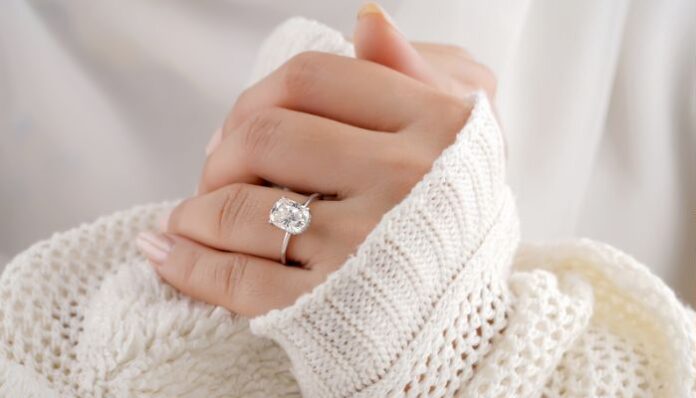Introduction: A New Era for Luxury
The jewelry industry has always been associated with glamour, wealth, and timeless beauty. But in 2025, luxury is no longer defined by rarity alone, it’s defined by responsibility. As consumers grow more conscious of environmental and ethical issues, lab-grown diamonds are becoming the centerpiece of a global movement toward sustainable luxury. This shift isn’t just about aesthetics; it’s about values, technology, and transparency in how jewelry is made and sold.
The Rise of Ethical Consumerism
Modern shoppers are increasingly motivated by ethics and sustainability. A decade ago, few buyers questioned where their diamonds came from. Today, transparency has become a demand, not an option. Consumers especially millennials and Gen Z want assurance that their jewelry is sourced responsibly and doesn’t harm the planet or people.
This growing awareness has pushed brands to rethink their sourcing strategies. Lab-grown diamonds, created through controlled scientific processes, eliminate the environmental and ethical concerns tied to traditional mining. The result is a product identical to mined diamonds but with a cleaner conscience and often, a lower price tag.
How Lab-Grown Diamonds Are Made
The process of creating a lab-grown diamond involves cutting-edge science and precision. Two main techniques dominate the market:
- High Pressure High Temperature (HPHT): Mimics the natural conditions deep within the Earth by applying intense heat and pressure to carbon.
- Chemical Vapor Deposition (CVD): Uses carbon-rich gases in a chamber to grow diamonds layer by layer.
Both methods produce genuine diamonds with the same chemical, optical, and physical properties as natural ones. This innovation not only reduces environmental strain but also enables greater customization in color, size, and clarity.
A Business Revolution in Luxury Jewelry
From an economic standpoint, the rise of lab-grown diamonds is disrupting one of the world’s most traditional markets. The global diamond industry, long dominated by mining giants, is now facing competition from technology-driven companies offering sustainable alternatives.
Brands embracing ethical luxury are seeing a measurable boost in consumer trust and engagement. The appeal lies in the perfect balance between quality and conscience shoppers can now purchase premium jewelry without the moral weight of environmental damage or unfair labor practices.
Lab-grown diamonds have also opened new doors for small businesses and online retailers. With fewer barriers to entry and lower production costs, new players can compete with legacy brands, leading to a more diverse and innovative marketplace.
The Consumer Perspective: Conscious Luxury
Modern consumers are redefining what it means to be stylish and responsible. Jewelry buyers are no longer satisfied with products that only look beautiful; they want them to mean something. Ethical luxury has evolved into a lifestyle choice, reflecting values such as sustainability, equality, and transparency.
Interestingly, the market for lab-grown diamonds isn’t limited to younger generations. Even traditional buyers are warming up to the idea once they understand the science and quality assurance behind the process. The ability to purchase a larger, ethically produced stone for the same price as a smaller mined diamond has become an irresistible proposition.
Education and Awareness: Empowering Buyers
One of the biggest drivers of this shift has been education. Consumers today are better informed thanks to credible online resources and jewelry experts.
As Learning Jewelry highlights, growing awareness about lab-grown diamonds is transforming the market by empowering buyers with practical knowledge about diamond quality, certification, and long-term value.
This democratization of jewelry education ensures that every buyer from first-time shoppers to collectors can make confident, ethical, and smart decisions. Reliable guides and transparent reviews have become as essential to the jewelry business as the products themselves.
Sustainability Meets Innovation
Beyond ethics, lab-grown diamonds represent a technological achievement. The industry’s embrace of innovation is making luxury more accessible, sustainable, and efficient.
Some key sustainability benefits include:
- Reduced carbon footprint: Lab-grown production emits significantly less CO₂ than mining.
- Minimal water waste: Mining consumes thousands of liters per carat, while lab production uses a fraction.
- Conflict-free sourcing: No human exploitation or unsafe labor conditions are involved.
- Recyclable metals: Many jewelers now use recycled gold or platinum for settings, completing the sustainable cycle.
This combination of science and sustainability positions lab-grown diamonds as the future of responsible elegance.
The Business Impact: Profits with Purpose
Ethical jewelry isn’t just a moral victory, it’s a financial one too. Retailers that have integrated sustainable practices are witnessing higher customer loyalty and brand advocacy. Transparency builds trust, and trust translates into long-term profitability.
In fact, investors are also taking note. ESG (Environmental, Social, and Governance) metrics now play a significant role in how businesses are evaluated. Companies in the jewelry sector adopting lab-grown or traceable stones are seeing increased appeal to sustainability-focused investors and venture capitalists.
The message is clear: the future of luxury is not just glittering, it’s green.
The Road Ahead: Merging Tradition and Innovation
While some purists still prefer mined diamonds for their natural origin story, the conversation around “authenticity” is evolving. The jewelry industry is learning that innovation doesn’t erase tradition, it enhances it.
The coming years will likely see hybrid collections combining mined and lab-grown stones, with clear labeling and transparent storytelling. This approach respects both heritage and progress, catering to a wide spectrum of buyers who value choice, honesty, and artistry.
Conclusion: Redefining the Meaning of Luxury
The rise of lab-grown diamonds marks a turning point in how we define luxury and success. Ethical choices are no longer niche; they are mainstream. Modern consumers want to feel good about what they wear and how it was made.
In this new landscape, businesses that prioritize sustainability, transparency, and education will thrive. Ethical luxury isn’t just a trend, it’s the future of the jewelry industry, proving that beauty shines brightest when it reflects integrity.
FAQs
- Are lab-grown diamonds real diamonds?
Yes. Lab-grown diamonds have the same physical, optical, and chemical properties as mined ones. The only difference is their origin: they’re created in controlled environments rather than mined from the earth. - Why are lab-grown diamonds considered more ethical?
They’re produced without mining, avoiding environmental destruction and unethical labor practices. This makes them a sustainable and conflict-free alternative to natural diamonds. - Do lab-grown diamonds hold value over time?
While resale prices can differ, lab-grown diamonds retain significant value due to their quality and rising consumer acceptance. Their affordability and sustainability make them a smart, long-term purchase. - How can I identify a lab-grown diamond?
Only specialized testing equipment can distinguish between mined and lab-grown diamonds. Buyers should always request certification from reputable labs such as GIA or IGI. - What is the future of the jewelry industry?
The future combines innovation, transparency, and ethics. As technology advances and awareness grows, sustainable luxury led by lab-grown diamonds will continue to redefine global jewelry trends.


